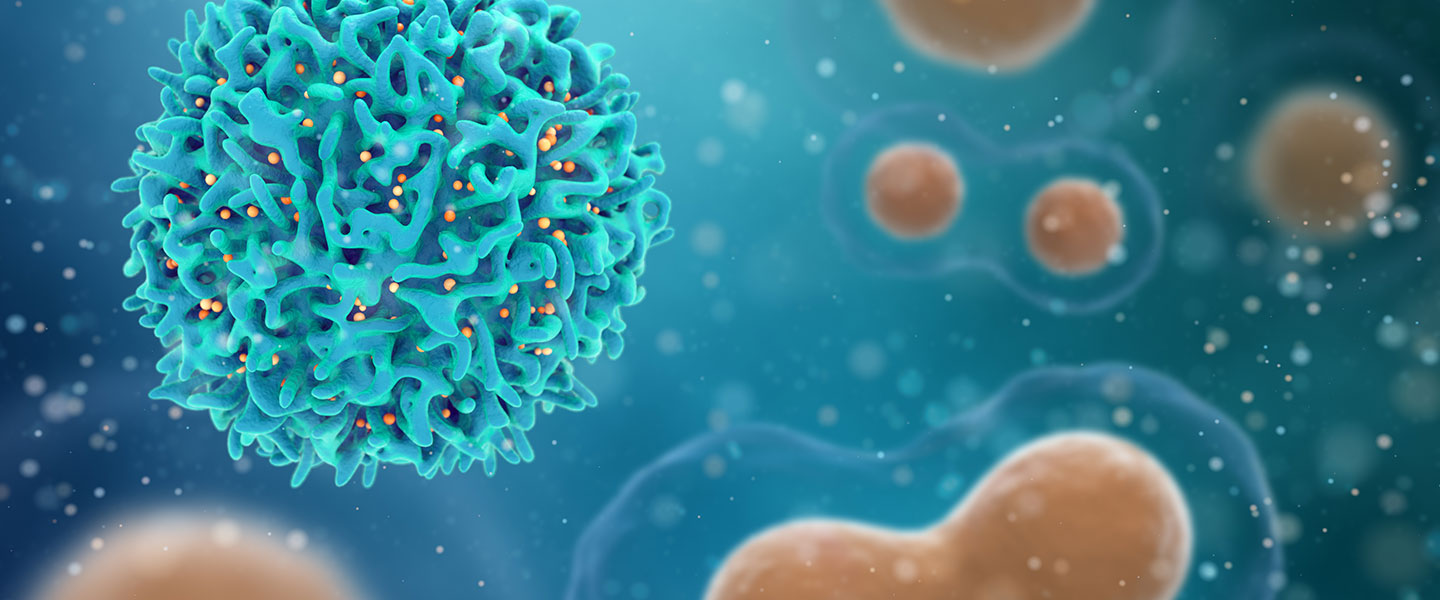According to the American Cancer Society, more than 18 million people in the U.S. have cancer, and many of them will experience oncologic emergencies from their cancer or cancer treatments.
Here are the ten most widely recognized types of emergencies.
- Sepsis
- Tumor Lysis Syndrome (TLS)
- Anaphylaxis
- Syndrome of Inappropriate Antidiuretic Hormone (SIADH)
- Disseminated Intravascular Coagulation:
- Hypercalcemia of Malignancy
- Spinal Cord Compression
- Superior Vena Cava Syndrome
- Increased Intracranial Pressure
- Cytokine Release Syndrome
Sepsis
Sepsis is what happens in the body when there is an underlying infection that becomes overpowering for the immune system.
The infection can be bacterial, viral, or fungal, triggering a chain reaction throughout the body. People with cancer have a five times higher rate of sepsis than people without cancer. Risk factors include comorbidities, age younger than one year and older than 65 years, absolute neutrophil count (ANC) less than 500 cel/mm3, immunosuppression due to hematologic malignancies, metastatic disease involving the bone marrow, medications affecting the immune response, such as steroids, purine analogues, prolonged neutropenia greater than seven days, hematologic malignancies, monoclonal antibodies or therapies for immunosuppression stem cell transplantation due to prolonged myelosuppression and B and T cell depletion for months to as many as two years after transplantation, chronic illness (diabetes, renal, hepatic, cardiovascular, pulmonary or gastrointestinal disease) and intensive care unit stays longer than one day.
Sepsis is the most common cause of death for people with cancer other than cancer itself. People with cancer are immuno-compromised. Antibiotics are the best treatment.
Tumor Lysis Syndrome (TLS)
TLS happens when large numbers of cancer cells die quickly, which can occur soon after a patient’s first cancer treatment.
The cellular contents are released into the blood, creating electrolyte changes. Potassium, uric acid, and phosphorus are leaked into the bloodstream, putting stress on the kidneys. Treatment includes monitoring lab values, limiting potassium and phosphorus intake, and adequate hydration. Rasburicase is often used to treat high levels of uric acid in the blood. Other treatments include calcium carbonate, sodium bicarbonate, hypertonic glucose, insulin, phosphate-binding agents, IV calcium gluconate, calcium chloride, and hemodialysis.
Anaphylaxis
Anaphylaxis is a severe, potentially life-threatening allergic reaction.
It can happen quickly after exposure to something a person is allergic to, such as medications used to treat cancer, including chemotherapy and supportive medications. Pre-medications such as corticosteroids and histamine antagonists can help prevent anaphylaxis; however, anaphylactic reactions can occur even if a patient received pre-medication.
Syndrome of Inappropriate Antidiuretic Hormone (SIADH)
Syndrome of inappropriate antidiuretic hormone is when the body creates inappropriate, unregulated production and secretion of antidiuretic hormones.
These are hormones regulated in the brain that helps kidneys manage the amount of water in the body. Forty percent of people with cancer can show symptoms of SIADH1. SIADH more frequently develops in patients with small cell lung or head and neck cancer. Additionally, some chemotherapies can cause SIADH. If the cancer is the cause of SIADH, starting treatment is a priority.
Disseminated Intravascular Coagulation
Disseminated intravascular coagulation is an oncologic emergency in which bleeding and clotting occur simultaneously.
Certain cancer types or sepsis can cause disseminated intravascular coagulation, with a high mortality rate once diagnosed. It occurs in about 7% of solid tumors (lung, breast, ovarian, renal, stomach, pancreatic, prostate, melanoma, or gallbladder cancers) and 20% of acute leukemias. 1 In addition, more than 90% of patients diagnosed with acute promyelocytic leukemia have an extremely high rate of developing disseminated intravascular coagulation at the time of diagnosis or after the first treatment cycle. 1 Patients with infections, sepsis, liver disease, prosthetic devices (i.e., shunts), metabolic acidosis, intravascular hemolysis, trauma, burns, and immunologic reactions (i.e., transplant rejection) are also at high risk for disseminated intravascular coagulation. Regardless of the initial trigger for disseminated intravascular coagulation, the process after coagulation begins is the same. The key is to treat the underlying cause of disseminated intravascular coagulation, such as an infection or active bleeding. Platelets, plasma, Vitamin K, or antifibrinolytics may be used to treat active bleeding. Meanwhile, blood clots are treated with anticoagulants such as heparin, except when the patient has a high risk of bleeding.
Hypercalcemia of Malignancy
Affecting about 10-30 percent of cancer patients, hypercalcemia of malignancy metabolic disorder occurs when cancer cells invade and destroy the bone.1
Several situations can lead to hypercalcemia of malignancy, including tumor stimulation of osteoclasts or parathyroid hormone, resulting in increased bone resorption, decreased renal clearance of calcium, and increased gut absorption of calcium. Diagnosis is often delayed because symptoms are not easily distinguishable. Renal and neurologic symptoms are the most common that lead to the initial diagnosis. More specific symptoms include drowsiness, weakness, irritability, cognitive dysfunction, visual disturbances, seizures, stupor, muscle weakness, bone pain, ataxia, nausea and vomiting, constipation, and pruritis. In addition, it is possible to have electrocardiogram (ECG) changes or coma. Treatments include hydration, bisphosphonates, loop diuretics, dialysis for renal failure, corticosteroids, dietary changes, and weight-bearing activities.
Spinal Cord Compression
Spinal cord compression occurs when the tumor outside the spinal cord extends to the spinal cord. It has been seen in up to 15% of cancer patients and is more common in patients diagnosed with breast, prostate, lung, non-Hodgkin’s lymphoma, multiple myeloma, and renal cell carcinoma.1
Three mechanisms drive the development of spinal cord compression. Signs of spinal cord compression are similar in how they present across different cancer types. Back pain is the classic symptom, which typically occurs ahead of any other symptoms and can last several months before other symptoms present. Types of pain include localized pain and radiating pain, also known as radicular or referred pain. After back pain, other symptoms such as motor weakness, sensory loss, and autonomic dysfunction (which could be loss of bladder control and, if not identified, can lead to early paralysis) can occur and be irreversible. Corticosteroids can reduce inflammation and alleviate symptoms such as pain and the above-described neurologic symptoms. Patients experiencing spinal cord compression typically receive pain medications. The standard treatment is radiation which uses conventional external beam radiation, which can be used for treatment and palliation.
Superior Vena Cava Syndrome
Superior vena cava syndrome occurs when the superior vena cava is obstructed or compressed.
This malady can impact up to 15,000 people in the U.S. each year, and approximately 3–4% of all patients with cancer involving the chest develop this syndrome.1 Superior vena cava syndrome can be caused by a tumor blockage, tumor invasion through the vessel wall, a blood clot around a central venous catheter, or a clot that occurs in the area of the superior vena cava but is not associated with a catheter. Symptoms can be rapid or, more commonly, slow and nonspecific. Collateral circulation can develop to compensate for the obstructed superior vena cava leading to a later diagnosis. Quickly developing symptoms tend to lead to more serious problems. Mild symptoms may include subtle signs of edema, dyspnea, non-productive cough, feelings of fullness in the head, and chest discomfort. The patient can experience dysphagia and hoarseness if the cranial nerve is trapped. Women may notice swelling in their breasts and have difficulty removing rings from their fingers. The symptoms may improve after standing or sitting upright. Symptoms can be worse if lying down for a long time, such as when waking up in the morning. Later symptoms include cyanosis of the face and upper torso, chest pain, orbital edema, congestive heart failure, increased blood pressure, and stridor. Treatment typically involves treating cancer with chemotherapy or radiation. However, radiation is the primary treatment for superior vena cava syndrome. Oxygen, bronchodilators, steroids, and thrombolytic therapy may also help with symptoms.
Increased Intracranial Pressure
Increased intracranial pressure occurs when there is increased pressure of the contents within the skull.
Patients with brain cancers have a 17% higher chance of experiencing increased intracranial pressure.1 Symptoms depend on what is causing the pressure and where the pressure is located in the skull. Presentation of symptoms can initially be vague but can quickly worsen. These can include headaches, nausea, vomiting, photophobia, behavior or cognitive changes, restlessness, and seizures. As the intracranial pressure worsens, headaches will intensify and become more regular. Position changes, such as getting out of bed, can increase intracranial pressure. Late symptoms include lethargy, pupil changes, hypertension, bradypnea, bradycardia, loss of reflexes, papilledema, and vision changes. Prevention is the most important measure. Treatment can include: keeping the head elevated at 30 degrees, maintaining normal body temperature, providing glucocorticoids, treating lab abnormalities, preventing seizures, using osmotic agents, and managing pain.
Cytokine Release Syndrome
Cytokine release syndrome is a systemic inflammatory response triggered by infections and certain drugs.
Incidence rates vary depending on the type of cancer and treatment. Symptoms can occur quickly and become life-threatening. Patient-specific related risk factors can include CAR T-cell therapy, first infusion of rituximab, chemotherapy-naïve patients receiving a monoclonal antibody, and leukemia/lymphoma patients with high lymphocyte counts. Large numbers of lymphocytes (B-cells, T-cells, and/or natural killer cells) and/or myeloid cells (dendritic cells, monocytes, and macrophages) are activated, leading to the rapid release of large numbers of inflammatory cytokines. Mild symptoms can be similar to the flu, including fever, fatigue, headache, rash, arthralgia, and myalgia. Symptoms typically occur within a couple of days following infusion of a high-risk drug and, on average last a week. Severe symptoms result from uncontrolled systemic inflammation, which causes capillary leaks, disseminated intravascular coagulation, multi-system organ failure, hypotension that does not respond to fluid resuscitation, hypoxia requiring oxygen support, coagulopathy, renal dysfunction, cardiac dysfunction, and neurologic toxicity. Seizures and cranial nerve palsies can also occur. Treatments for less severe symptoms may include antipyretics, oxygen therapy, anti-cytokine therapy, symptomatic treatment of organ toxicities, and ruling out other processes, such as sepsis. More intensive interventions may consist of more aggressive oxygen therapy, corticosteroids, vasopressors, and hemodynamic monitoring. Intensive care unit (ICU) admission may also be necessary in some cases.
###
References
ONS online courses
- Oncologic Emergencies
- Essentials in Oncologic Emergencies for the advanced practice provider course
Sepsis
- Rimkus, C. (2018). Sepsis and septic shock. In M. Kaplan (Ed.), Understanding and managing oncologic emergencies: A resource for nurses(3rd ed., pp. 453-507). Pittsburgh: Oncology Nursing Society
- O’Leary, C. (2018). Septic shock. In C. Yarbro, D. Wujcik, & B. Gobel (Eds.), Cancer nursing: Principles and practice(8th ed., pp. 1135-1152). Burlington, MA: Jones & Bartlett Learning.
- Sepsis Alliance. (2022). Retrieved from Sepsis basics: https://www.sepsis.org/sepsis-basics/symptoms/
Tumor Lysis Syndrome
- Gobel, B. (2018). Tumor lysis syndrome. In M. Kaplan (Ed.), Understanding and managing oncologic emergencies: A resource for nurses(3rd ed., pp. 615-646). Pittsburgh: Oncology Nursing Society.
- Vioral, A. (2018). Tumor lysis syndrome. In C. Yarbro, D. Wukcik, & B. Goble (Eds.), Cancer nursing: Principles and practice(8th ed., pp. 1207-1223). Burlington, MA: Jones & Bartlett Learning.
Anaphylaxis
- Eisenberg, S. (2018). Infusion reactions, extravasation, and transfusion reactions. In M. Kaplan (Ed.), Understanding and managing oncologic emergencies: A resource for nurses (3rd ed., pp. 327-414). Pittsburgh: Oncology Nursing Society.
- O’Leary, C., & DeVilliers, A. (2018). Hypersensitivity reactions to antineoplastic drugs. In C. Yarbro, D. Wujcik, & B. Gobel (Eds.), Cancer nursing principles and practice(8th ed., pp. 905-919). Burlington, MA: Jones & Bartlett Learning.
- American Academy of Allergy, Asthma & Immunology. (n.d.).Anaphylaxis definition. Retrieved May 1, 2020, from Conditions & treatments: https://www.aaaai.org/conditions-and-treatments/conditions-dictionary/anaphylaxis
Syndrome of Inappropriate Antidiuretic Hormone
- Cope, D. (2018). Syndrome of inappropriate antidiuretic hormone secretion. In Understanding and managing oncologic emergencies: A resource for nurses(3rd ed., pp. 589-614). Pittsburgh: Oncology Nursing Society.
- Keenan, A. (2018). Syndrome of inappropriate antidiuretic hormone. In C. Yarbro, D. Wukcik, & B. Gobel (Eds.), Cancer nursing: Principles and practice(8th ed., pp. 1197-1206). Burlington, MA: Jones & Bartlett Learning.
Disseminated Intravascular Coagulation
- Cope, D. (2018). Disseminated intravascular coagulation. In M. Kaplan (Ed.), Understanding and managing oncologic emergencies: A resource for nurses(3rd ed., pp. 177-216). Pittsburgh: Oncology Nursing Society.
- Gobel, B. (2018). Disseminated intravascular coagulation. In C. Yarbro, D. Wukcik, & B. Gobel (Eds.), Cancer nursing: Principles and practice(8th ed., pp. 1095-1105). Burlington, MA: Jones & Bartlett Learning.
- Popescu, N. et al (2022). Disseminated intravascular coagulation and its immune mechanisms.Blood V139 (13). (pp 1973-1988) https://www.sciencedirect.com/science/article/pii/S0006497121015147
Hypercalcemia of Malignancy
- Kaplan, M. (2018). Hypercalcemia of malignancy. In M. Kaplan (Ed.), Understanding and managing oncologic emergencies: A resource for nurses(3rd ed., pp. 217-276). Pittsburgh: Oncology Nursing Society.
- Kaplan, M. (2018). Hypercalcemia of malignancy. In C. Yarbro, D. Wukcik, & B. Gobel (Eds.), Cancer nursing: Principles and practice(8th ed., pp. 1107-1134). Burlington, MA: Jones & Bartlett Learning.
Spinal Cord Compression
- Kaplan, M. (2018). Spinal cord compression. In M. Kaplan (Ed.), Understanding and managing oncologic emergencies: A resource for nurses(3rd ed., pp. 509-560). Pittsburgh: Oncology Nursing Society.
- Rucker, Y. (2018). Spinal cord compression. In C. Yarbro, D. Wukcik, & B. Gobel (Eds.), Cancer nursing: Principles and practice(8th ed., pp. 1153-1168). Burlington, MA: Jones & Bartlett Learning.
Superior Vena Cava Syndrome
- McNally, G. (2018). Superior vena cava syndrome. In C. Yarbro, D. Wukcik, & B. Gobel (Eds.), Cancer nursing: Principles and practice(8th ed., pp. 1187-1206). Burlington, MA: Jones & Bartlett Learning.
- Shelton, B. (2018). Superior vena cava syndrome. In M. Kaplan (Ed.), Understanding and managing oncologic emergencies: A resource for nurses(3rd ed., pp. 561-588). Pittsburgh: Oncology Nursing Society.
Increased Intracranial Pressure
- Allen, D. (2018). Increased intracranial pressure. In C. Yarbro, D. Wukcik, & B. Gobel (Eds.), Cancer nursing: Principles and practice(8th ed., pp. 1169-1185). Burlington, MA: Jones & Bartlett Learning.
- Shelton, B., Skinner, J., & Baynes, M. (2018). Increased intracranial pressure. In M. Kaplan (Ed.), Understanding and managing oncologic emergencies: A resource for nurses(3rd ed., pp. 277-326). Pittsburgh: Oncology Nursing Society.
Cytokine Release Syndrome
- Oncology Nursing Society. (2019). Chemotherapy and immunotherapy guidelines and recommendations for practice(5th ed.). (M. Olsen, K. LeFebvre, & K. Brassil, Eds.) Pittsburgh: Oncology Nursing Society.
- Shimabukuro-Vornhagen, A., Godel, P., Subklewe, M., Stemmler, H., Schlober, H., Schlaak, M., . . . von Bergwelt-Baildon, M. (2018). Cytokine release syndrome. Journal for Immunotherapy of Cancer, 6(56). doi:10.1186/s40425-018-0343-9
- Smith, L., & Venella, K. (2017). Cytokine release syndrome: Inpatient care for side effects of CAR T-cell therapy. Clinical Journal of Oncology Nursing, 21(2), 29-34. doi:10.1188/17.CJON.S2.29-34








